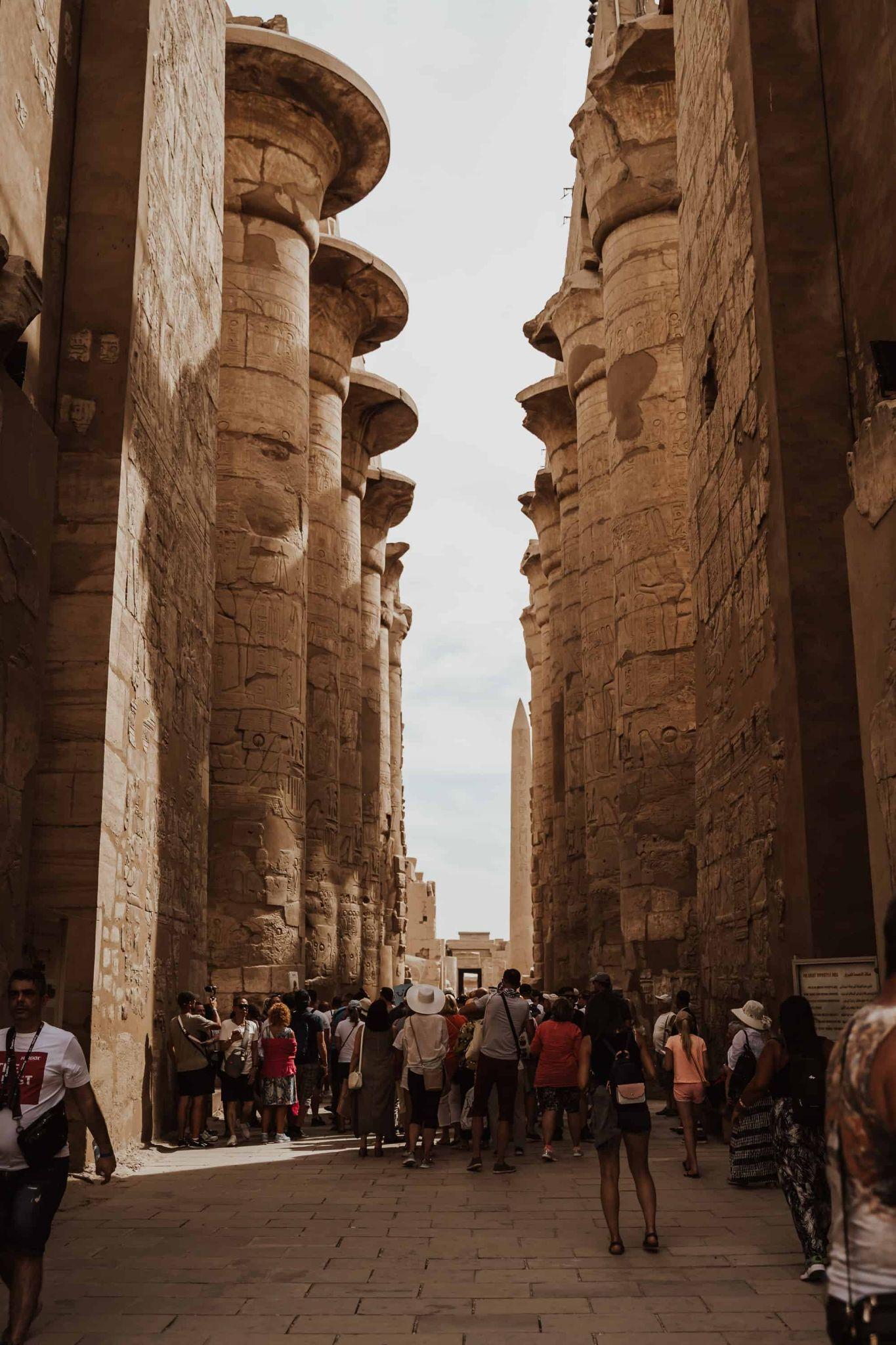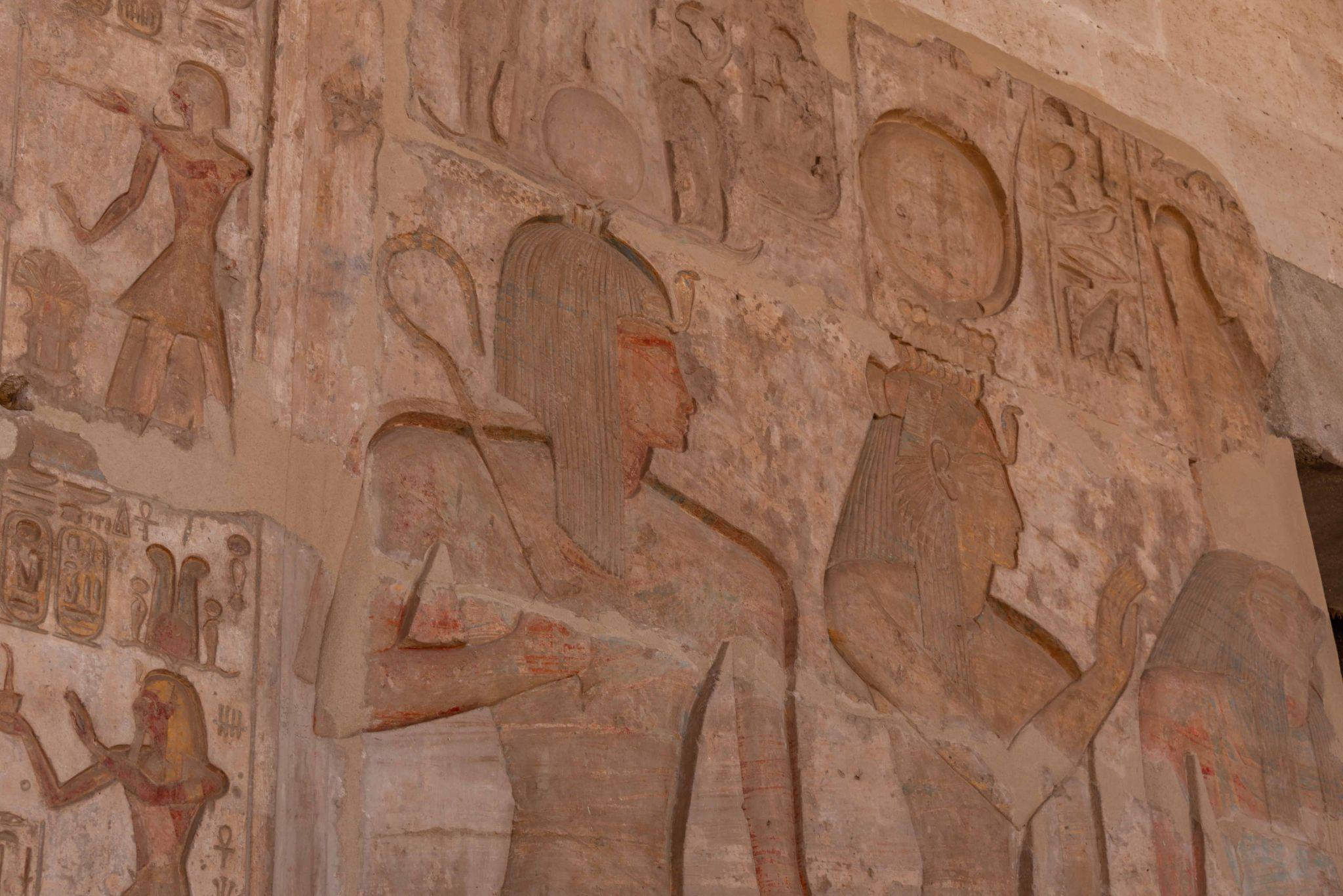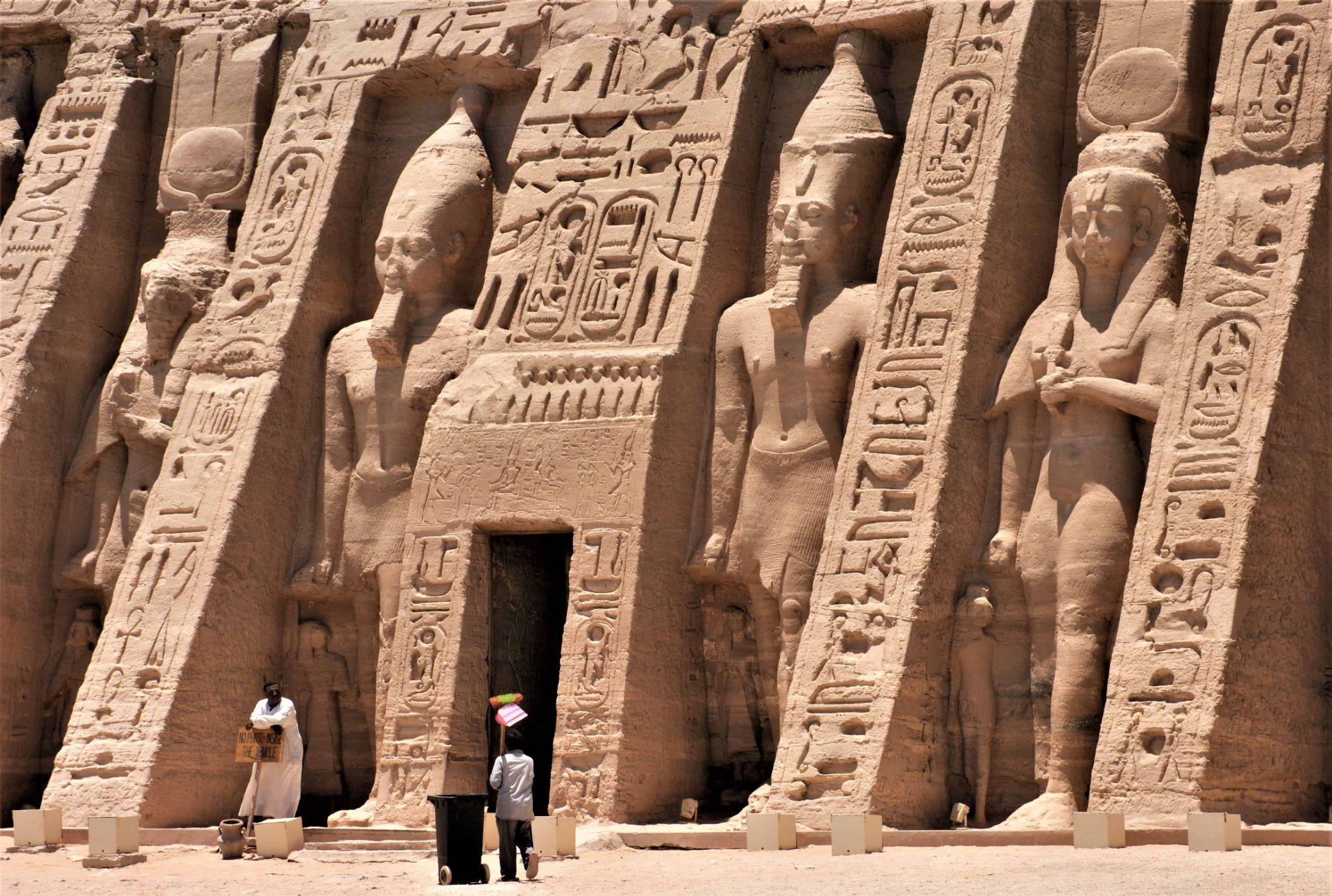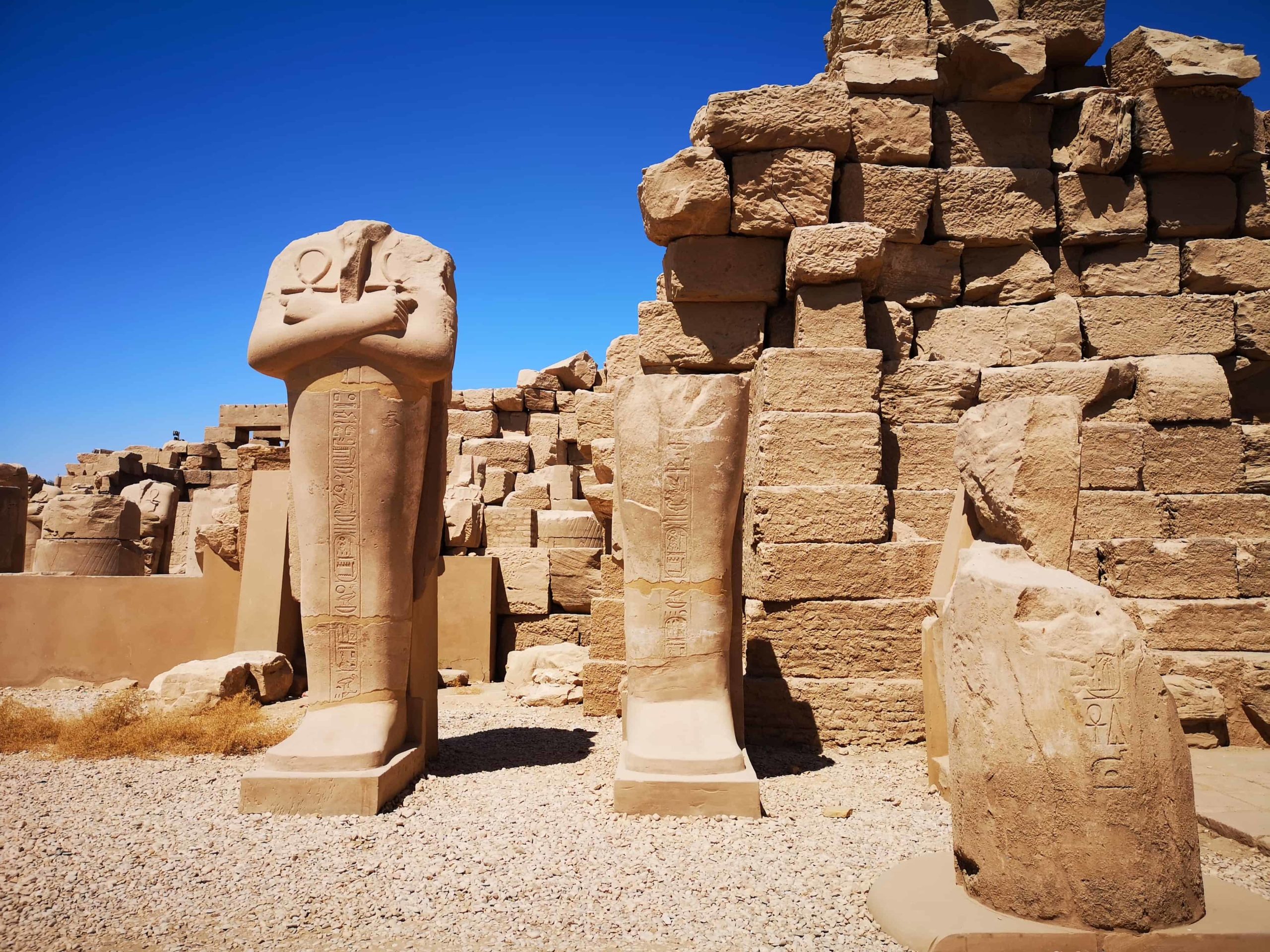Exploring Ancient Egypt’s Temples: From Karnak to Luxor
Egypt is a land steeped in history, a place where the ancient world still speaks to us through its monuments, artifacts, and temples. One of the most fascinating aspects of Egyptian culture is its religious practices, which were intimately tied to the divine pharaohs who ruled the country for thousands of years. At the heart of this religious system were the great temples, vast complexes of buildings and courtyards dedicated to the worship of the gods and the glorification of the pharaohs. In this article, we will take a journey through some of the most magnificent temples of ancient Egypt, from Karnak to Luxor, and explore the stories they tell about this fascinating civilization.
Karnak Temple

Our journey begins in the city of Thebes, modern-day Luxor, which was the political and religious center of Egypt for much of its history. The most famous temple in Thebes is undoubtedly Karnak, a vast complex of structures and courtyards that was built and expanded over the course of more than 1,500 years. Karnak was dedicated primarily to the god Amun, who was one of the most important deities in the Egyptian pantheon. The temple was believed to be the home of Amun on earth, and it was visited by pharaohs and common people alike in order to pay their respects to the god and seek his favor.
The most impressive structure at Karnak is the Great Hypostyle Hall, a massive hall supported by 134 towering columns, many of which are over 20 meters tall. The hall covers an area of over 5,000 square meters and was used for a variety of religious and ceremonial purposes. It was here that the pharaohs were crowned and where the sacred barques, or boats, of the gods were stored when they visited the temple.
Another important feature of Karnak is the Sacred Lake, a large body of water that was believed to be the home of the goddess Mut. The lake was used for ritual purification and was also the site of the annual Opet festival, during which the god Amun was believed to merge with the pharaoh in a symbolic act of rebirth.
Luxor Temple

Our next stop on this journey through ancient Egypt’s temples is Luxor Temple, which was also located in the city of Thebes. Luxor Temple was dedicated primarily to the god Amun and his consort Mut, as well as to the deified pharaohs who were believed to have become gods after their deaths. The temple was built over the course of several centuries, with additions and renovations made by many different pharaohs.
One of the most striking features of Luxor Temple is the Avenue of Sphinxes, a long avenue lined with sphinxes that connected the temple to the nearby Karnak Temple. The avenue was more than two kilometers long and was used for religious processions and ceremonies. It was also the site of an annual festival known as the Opet festival, during which the god Amun was believed to visit Luxor Temple from his home at Karnak.
Another impressive feature of Luxor Temple is the colonnade, a series of columns with elaborate capitals that support a roof. The columns are decorated with intricate reliefs and carvings that depict scenes from the lives of the pharaohs and the gods. The colonnade leads to the inner sanctum of the temple, which was believed to be the home of the gods and was accessible only to the pharaoh and his priests.
The Temple of Hatshepsut

Moving on from Luxor, we come to the Temple of Hatshepsut, which is located on the west bank of the Nile in the Valley of the Kings. Hatshepsut was one of the few female pharaohs in ancient Egypt, and her temple is one of the most unique and impressive in the country. The temple was built into a cliff face and was designed to blend seamlessly into the natural surroundings. It was dedicated to the god Amun and to Hatshepsut herself, who was often depicted in the guise of a male pharaoh.
The most striking feature of the Temple of Hatshepsut is the colonnaded terrace, a series of terraces with rows of columns that lead up to the main sanctuary. The columns are decorated with scenes from Hatshepsut’s life and reign, including her famous expedition to the land of Punt, which brought back exotic goods and animals to Egypt.
The temple also includes several courtyards and chapels dedicated to other gods, including Anubis, the god of mummification, and Hathor, the goddess of love and fertility. One of the most interesting features of the temple is the so-called “birth colonnade,” which depicts the divine birth of Hatshepsut and her divine right to rule as pharaoh.
Abu Simbel

Finally, our journey through the temples of ancient Egypt takes us to Abu Simbel, a remote site in southern Egypt that is home to two massive rock temples dedicated to the gods Amun and Ra-Horakhty. The temples were built by the pharaoh Ramses II in the 13th century BCE and were designed to impress and intimidate visitors to the region.
The most impressive feature of the Abu Simbel temples is the colossal statues that guard the entrance. The four statues of Ramses II, each over 20 meters tall, sit on thrones with their arms crossed and their stern expressions gazing out over the desert landscape. The temples themselves are also carved into the rock, with intricate hieroglyphics and reliefs that depict scenes from the pharaoh’s life and reign.
The Abu Simbel temples were actually relocated in the 20th century in order to save them from flooding due to the construction of the Aswan High Dam. The temples were cut into pieces and moved to a new site higher up on the cliffs, where they continue to awe and inspire visitors to this day.
The temples of ancient Egypt are a testament to the ingenuity, creativity, and devotion of this fascinating civilization. From the massive halls of Karnak to the hidden courtyards of the Temple of Hatshepsut, these structures offer a glimpse into the religious beliefs and practices of the ancient Egyptians and their unwavering commitment to the gods and goddesses they worshipped.
The temples also showcase the incredible architectural and engineering skills of the ancient Egyptians, who were able to construct such grand structures using only primitive tools and manual labor. From the intricate carvings and reliefs to the towering statues and columns, each temple is a work of art that has stood the test of time.
Today, these temples continue to captivate visitors from around the world, offering a glimpse into a civilization that flourished thousands of years ago. They are not just monuments to the past, but also reminders of the enduring legacy of the ancient Egyptians and their contributions to human history.
As we explore these temples, we are reminded of the power of human creativity and the importance of preserving the treasures of our past. These temples are not just a window into ancient Egypt, but also a reminder of our shared human heritage and the achievements of our ancestors.

